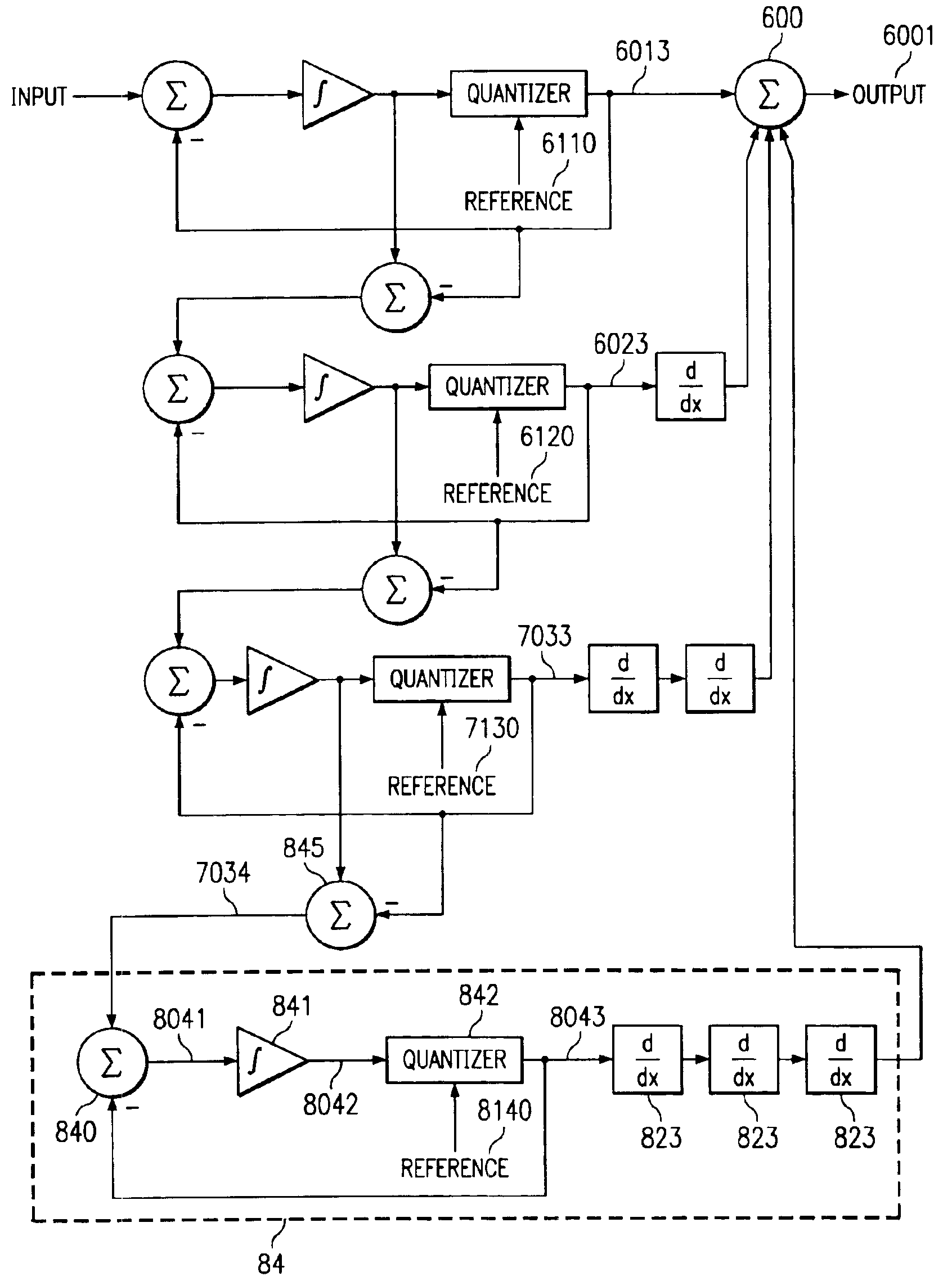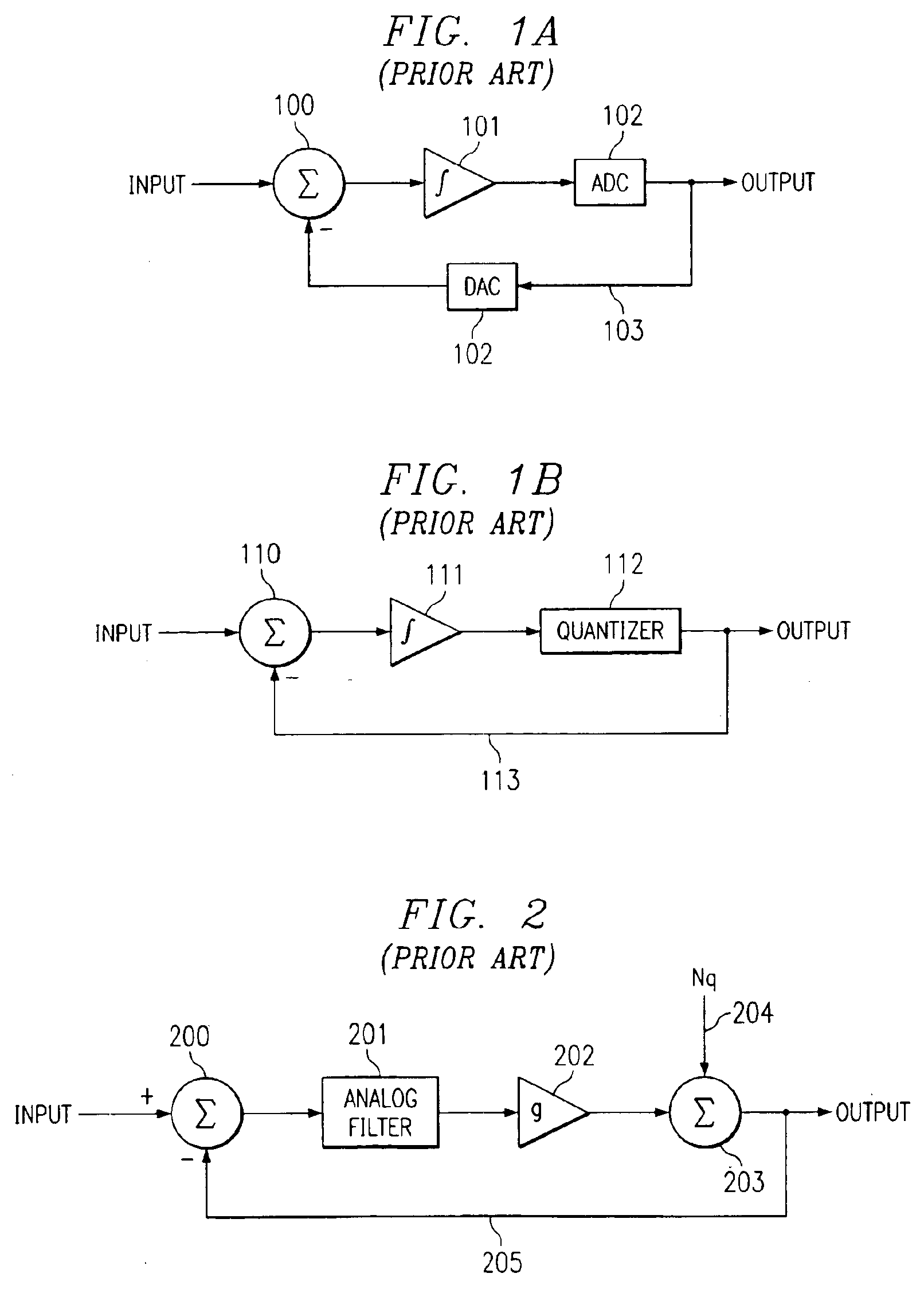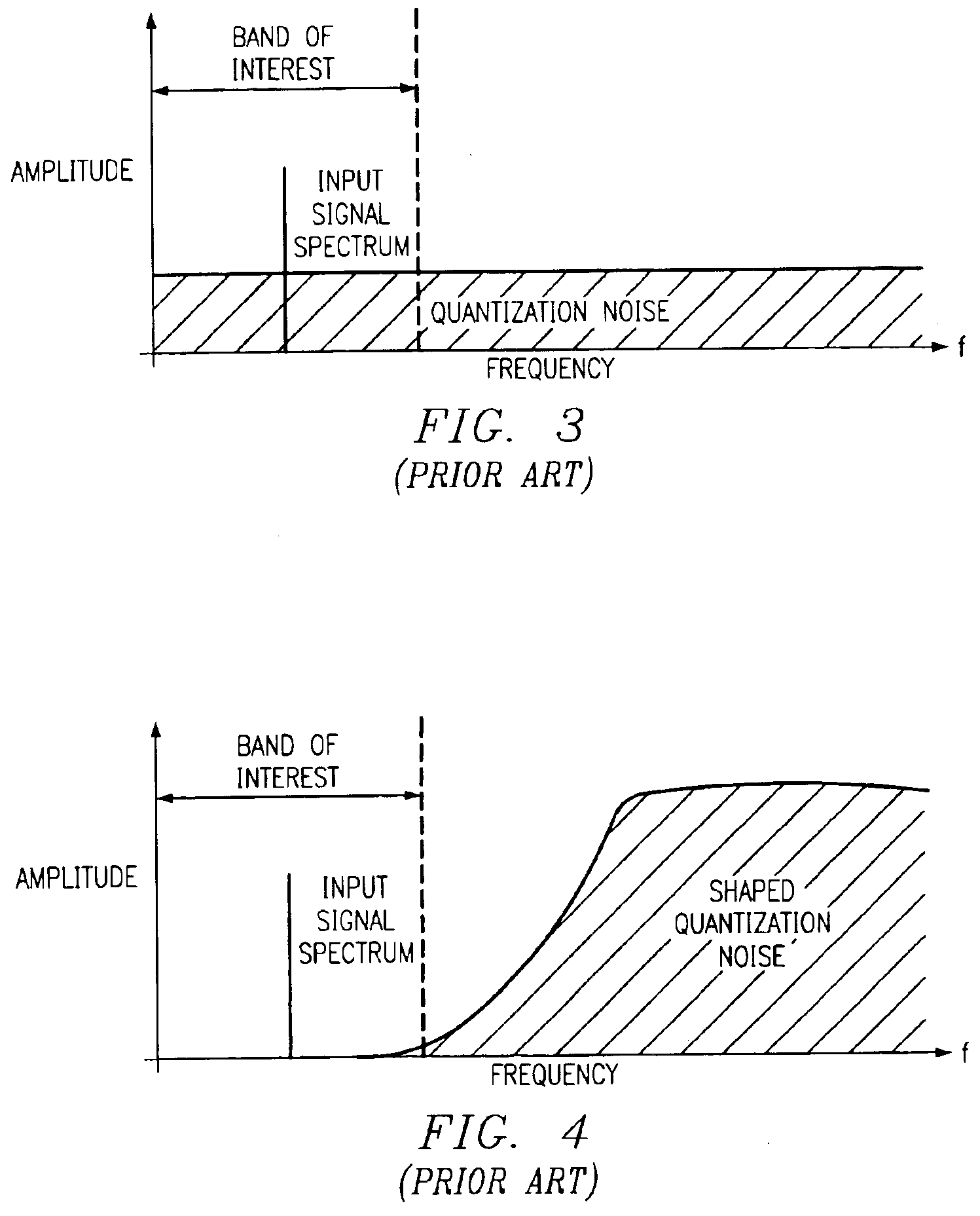Delta-sigma modulator system and method
a modulator and delta-sigma technology, applied in the field ofsignal processing, can solve the problems of preventing the recovery of information, causing noise in the sampled signal, and affecting the operation of the circuit, so as to improve the noise suppression and noise shaping effect, increase the size, complexity, or power requirements of the circui
- Summary
- Abstract
- Description
- Claims
- Application Information
AI Technical Summary
Benefits of technology
Problems solved by technology
Method used
Image
Examples
Embodiment Construction
[0052]A preferred embodiment of the present invention enhances the noise characteristics of multi-order delta-sigma modulators by preferably including a quantizer in every modulator stage after the first, which may be selectively programmed to vary the reference signal associated therewith. To achieve the improved response, the preferred embodiment of the present invention would vary the subsequent stages' reference signals to be different from the first stage reference signal.
[0053]FIG. 6 shows a preferred embodiment of the present invention configured as a digital MASH second-order delta-sigma modulator. The inventive system generally receives input signal 6000 into stage one modulator 61. Input signal 6000 typically passes through stage one summer 610 which subtracts stage one output signal 6013 to form stage one intermediate signal 6011. Stage one intermediate signal 6011 is then usually integrated by integrator 611 to form stage one integrated signal 6012, which is then typical...
PUM
 Login to View More
Login to View More Abstract
Description
Claims
Application Information
 Login to View More
Login to View More - R&D
- Intellectual Property
- Life Sciences
- Materials
- Tech Scout
- Unparalleled Data Quality
- Higher Quality Content
- 60% Fewer Hallucinations
Browse by: Latest US Patents, China's latest patents, Technical Efficacy Thesaurus, Application Domain, Technology Topic, Popular Technical Reports.
© 2025 PatSnap. All rights reserved.Legal|Privacy policy|Modern Slavery Act Transparency Statement|Sitemap|About US| Contact US: help@patsnap.com



